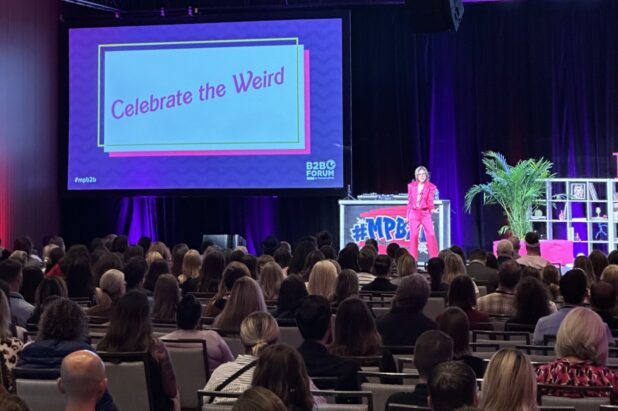 The PR industry is in a state of flux with increasing importance on getting into the content and social web business. Consumers are spending more time with digital and social media. Advertising dollars are following. That means less budget to staff newsrooms and reporters, journalists and editors to pitch.
The PR industry is in a state of flux with increasing importance on getting into the content and social web business. Consumers are spending more time with digital and social media. Advertising dollars are following. That means less budget to staff newsrooms and reporters, journalists and editors to pitch.
Understanding the needs of their “customers’ customer” is essential for PR agencies and communications professionals to remain relevant and productive. “Push PR” is increasingly being complemented by “Pull” tactics – optimization for discovery. Being able to provide value is essential and here are 3 ways a better understanding of SEO can do just that.
1. Fish where the fish are.
There were over 14 billion core searches in Dec (comSore) vs 285 million who watch TV in a given month (Nielsen). Consumers rely on search daily to find news and information. PR and communications types need to understand the consumer search behaviors and preferences (keywords) of their clients as well as the publications they want their clients to be covered by.
2. Journalists rely on search.
According to TopRank’s “Journalist Use of Search survey”, 91% of journalists, editors and reporters surveyed use standard search engines such as Google, Yahoo or Bing to do their job. That preference was mirrored by findings in a recently published “Social Media & Online Usage Study” (pdf) by George washington University and Cision where 100% of those surveyed use Google to research stories.
3. Optimization is about more than SEO.
Search engine optimization, digital asset optimization, social media optimization and even micromedia optimization (ie real time SEO) are buzzwords all representing opportunities for Media Relations and communications professionals to influence discovery by making it easier for various types of search engines to find, index and rank their content.
It’s imporant that communications people understand the different search options consumers and the media are using to distribute and consume news. If content can be searched on, it can be optimized. That includes everything from press releases to video to Tweets.
Search Engine Optimization or “SEO” as an umbrella term is typically concerned with any kind of work that influences any kind of search engine to do what it does best and hopefully in favor of the content being promoted. Most people mean optimizing content for better visibility in Google, Yahoo or Bing when they employ SEO tactics.
It’s important to note that many publishers are already using SEO tactics to make their news stories better suited for discovery and ranking on search engines. These efforts have resulted in substantial increases in traffic to online news sites, improving the attractiveness of advertising.
Digital Asset Optimization or “DAO” is a term TopRank has used and promoted since 2007 that makes reference to the different types of media search engines like Google have started to display (aka Blended or Universal search results) depending on the query. Search results are no longer limited to web pages and can include images, video thumbnails, news, blogs, books and local information. Optimizing for these different types of media involves understanding what digital assets can be created, keyword optimized and published online for search.
Social Media Optimization or “SMO” is a term initially made popular by Rohit Bhargava and added on to by several others in the SEO world including TopRank. While many social networks like Facebook and LinkedIn keep the bulk of their content behind a login and away from search engine spiders, many social interactions produce content that can be indexed and included in search results. Journalists and consumers increasingly participate with social channels to watch, share, contribute and curate information. If PR and communications can understand how to influence keyword use of social content then their news will be easier for analysts, reporters and journalists to find.
Here’s a story related to me by an editor in the TopRank Journalist use of search survey that illustrates the intersection of search and social media:
“I was writing a column about the planned partnership between Google and Yahoo.”
“I tracked down potential sources first using Google and LinkedIn, and came across a white paper prepared by a senior fellow at the American Antitrust Institute.”
“While I could not easily find an e-mail address, I went to Facebook where I located him, then sent a message. He replied and we followed up with a phone interview.”
Micromedia Optimization is a new term that basically means real time optimization of status updates and content sources that are indexed and included as real time content by search engines such as Google, Yahoo and Bing. The same micromedia content can be shared and discovered on platform specific search engines such as search.twitter.com and across social networks that provide the opportunity to syndicate such content. Google Buzz, Facebook status updates and LinkedIn updates are also included in this category.
The takeaway that I think is most important for communications professionals is to understand the nature of search and how to match up optimization tactics with channels of disccovery. Using keyword research for both standard search and social search optimization of news content along with ongoing web analytics and social media monitoring are key.
I’ll be discussing these strategies, tactics and a lot more at SMC Louisville tonight 6:30 p.m. until 8:30 p.m. ET on at the Louisville Visual Art Association. I hope folks can brave the snow (safely) and make it out. You won’t be disappointed!


